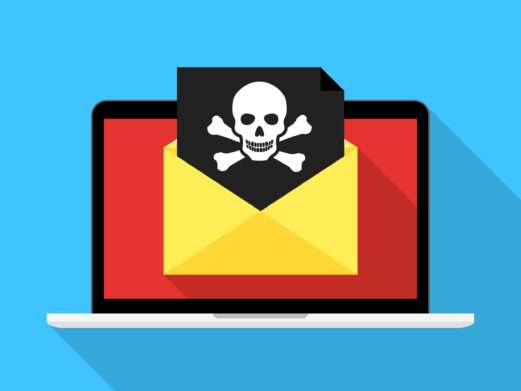
Identifying Virus and Malware Risks in Your Email Inbox
Here at WattMedia, we’ve become aware of suspicious and potentially damaging emails that are currently circulating among our clients and other website owners. These emails claim that the recipient has violated the sender’s copyright ownership, presenting a link to click that purportedly presents evidence of the copyrighted images. This link contains malware, which can present a serious security risk for you and your business.
Cybersecurity threats are growing in number and sophistication. Understanding the signs that an email or even a comment on your website’s blog is a malware scheme will help protect you against security risks.
Malware Red Flags
Suspicious Links
Whenever you receive an email from an unknown sender, it’s important to pause before you click. Oftentimes, in malware schemes, the message in the email is intended to concern or alarm you, as is the case of the fake copyright infringement email. If website owners become worried that they’re in legal trouble for supposedly violating another’s rights, they may be more likely to click on the link. Nonetheless, when an email contains an unknown link, never click it.
Unknown Email Address
Hackers may use an email address that contains the name of a family member, friend, or colleague to entice you to click on the link and download harmful malware. If you receive an email from an address that contains the name of someone you know but isn’t the email address they usually send from, contact the individual first to check if they sent it themselves.
Common Malware Extensions
Harmful files often have the extension .js or .exe. These extensions are often used to install malware, among other damaging programs. Only download files with these extensions if you’re sure of exactly where they came from.
Protecting Yourself Against Cybersecurity Risks
While cybersecurity threats are increasing in prevalence (and will continue to do so), there are actions that you can take to protect yourself against attacks.
Update Your Device
Keeping your computer updated will ensure that your OS and applications have the latest patches, which are updates that resolve security vulnerabilities. If your computer isn’t fully updated, it’s more vulnerable to malware attacks.
Backup Your Device
Regularly backing up your computer system and critical files will help restore your system if it were to undergo an attack. Cloud services that offer automatic versioning are particularly helpful in cybersecurity protection, as you can recover an earlier version of your files if the most recent version is compromised.
Stay Informed (And Inform Your Team)
Remaining informed about the latest cybersecurity risks and keeping your team educated about them is one of the best ways to avoid cyberattacks in the first place. The Cybersecurity and Infrastructure Security Agency offers resources that can keep you up-to-date.